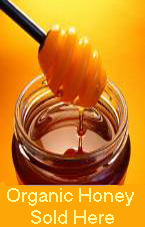
About PropolisPropolis is a viscous substance produced when bees’ saliva combines with saps of tree leaves and bark. It ranges from yellow-green to dark brown in color, and releases an aromatic pleasant odor. Propolis is used by honeybees to seal small gaps (approximately 6.35 millimeters or less) in their hives to prevent viruses and bacteria from growing. At room temperature or higher, it is sticky, while below room temperature, it becomes hard and brittle. It is found in small quantities in honey. Most propolis originates from tropical
regions, particularly Brazil, and have been of great economic interest through the years. Japan has been the
largest customer of this Brazilian product. Being of such commercial importance, there are now many scientific
studies and articles into this product in the international market. It is widely used as a nutritional supplement
in health food stores and online, and comes in a variety of forms, such astablets, ointment, powder, extract, and other cosmetics. Propolis has been known to be a natural source of medication to heal infected wounds and certain illnesses. When applied topically, it may defend against bacteria, viruses and other microorganisms. In fact, it was used by the Soviet Union to treat battle wounds in World War II. In the time of Hippocrates, it was used to heal both internal and external sores. However, repeated use of propolis may be dangerous and increase one’s tendency to develop allergies. Besides its healing powers, propolis is also rich in vitamins, flavonoids and minerals. Propolis contains 500 more bioflavonoids (vitamin P) than oranges. Propolis is comprised of 30% to 50% wax, 50% to 70% resins and balsams, 5% to 10% Bee Pollen and 10% essential oils. Like Royal Jelly and Bee Pollen, propolis also contains a number of unidentified compounds that work together symbiotically to create a balanced, nutritional substance.
> Types of Propolis - Green & Brown Propolis |
Brazilian Honey Varietal |
Sign up to our mailing list to receive news and special promotions from time to time.
Honey Honey Facts Honey Recipes Honey Outlets Honey Varietals Brazilian Honey Varietal Buy Online About Honey.sg Privacy Statement Contact Us Site Map
Copyright © 2005 - www.honey.sg

